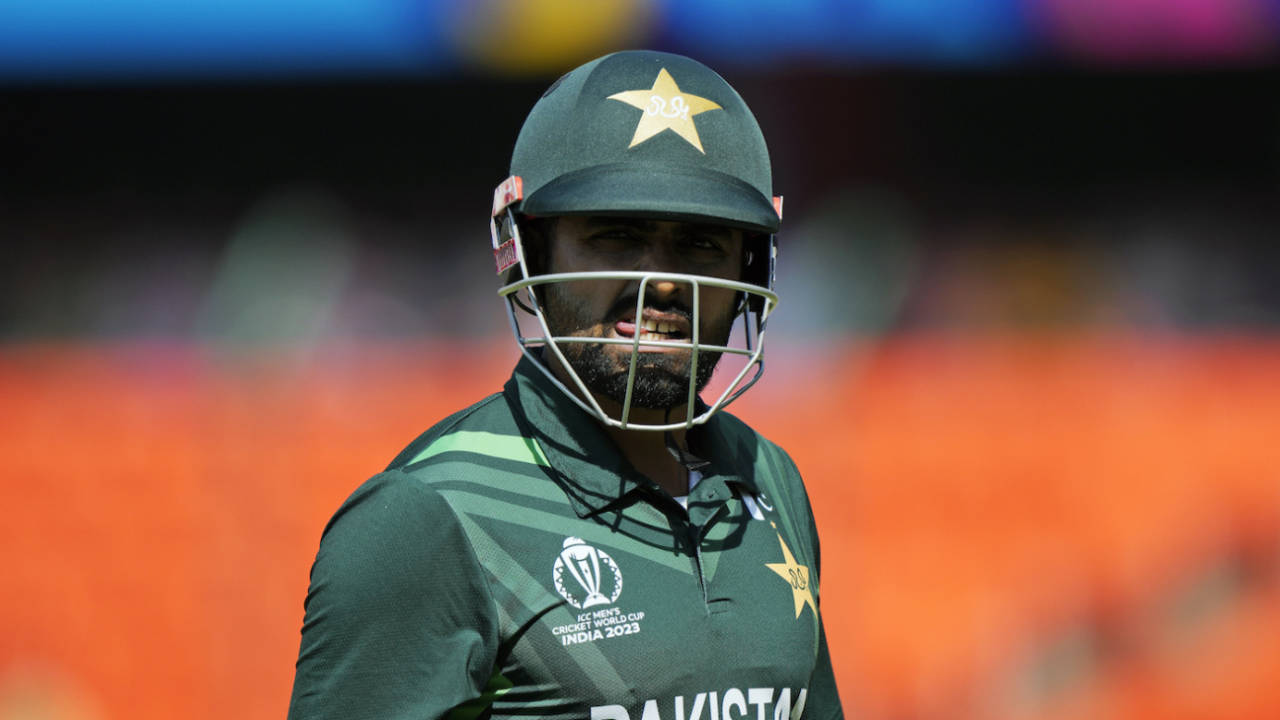It is no surprise that Pakistan have had to scramble a fair bit at the last moment in this World Cup.
The loss of Naseem Shah just before the World Cup has been huge, and leaves Shaheen Shah Afridi and Haris Rauf as lesser bowlers. Then Afridi, who is renowned for making an early impact with the ball, hasn't found any swing in this tournament. In fact the average swing and seam available in this tournament has been slightly less than it was in all ODI cricket earlier this year, but it has still been higher than the average swing and seam in the last World Cup. There have been three venues that have clearly offered above-average seam and swing - Delhi, Lucknow and Ahmedabad - which has offset the low assistance for seam bowlers in six other venues, with Kolkata just entering the fray.
Some teams feel it is the new batch of balls, some feel it is the dry squares, which have also scuffed up the ball sooner than usual, and some feel it is just the time of the year. Whatever may be the cause, Pakistan fast bowlers, the team's strength, have had to veer a fair way off their plans. Their spinners are what they are, which puts extra pressure on the seam bowlers to take wickets, which means they have had to venture into attacking lengths often rather than banging away consistently at the hard lengths that have been working in this World Cup.
While that allowance can reasonably be made, there is another aspect of Pakistan's game that has been lagging for a while and has been shown up once again in this World Cup. Their batters lack the power game that makes ODI sides dynamic. A great pace attack and steady batters can work in Tests, but in limited-overs cricket, batters need to do some heavy lifting. With two new balls, an extra fielder inside the circle in overs 11 to 40, and the game moving forward, this part of the game is difficult to make allowances for.
Pakistan have steady batters, but none of them strikes fear in the heart of oppositions. Even
Babar Azam hasn't shown the range of some of the other No. 3s although it not easy to do so in a batting line-up that is easy to keep quiet.
The numbers don't make for good reading. In this World Cup, only Afghanistan, Netherlands and Bangladesh have consumed more balls per boundary and scored a smaller percentage of their runs in boundaries than Pakistan. You limit it to six-hitting, and these are the only three teams behind them. These are also the only teams that have taken a smaller percentage of their overs for 12 or more runs. When batting first, only India have made boundary attempts to a smaller percentage of deliveries, but they have batted first only once and in extremely tough batting conditions.

